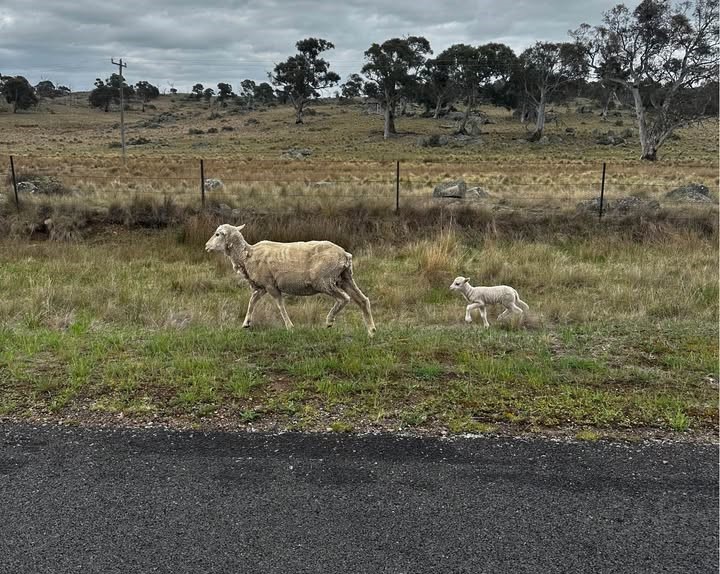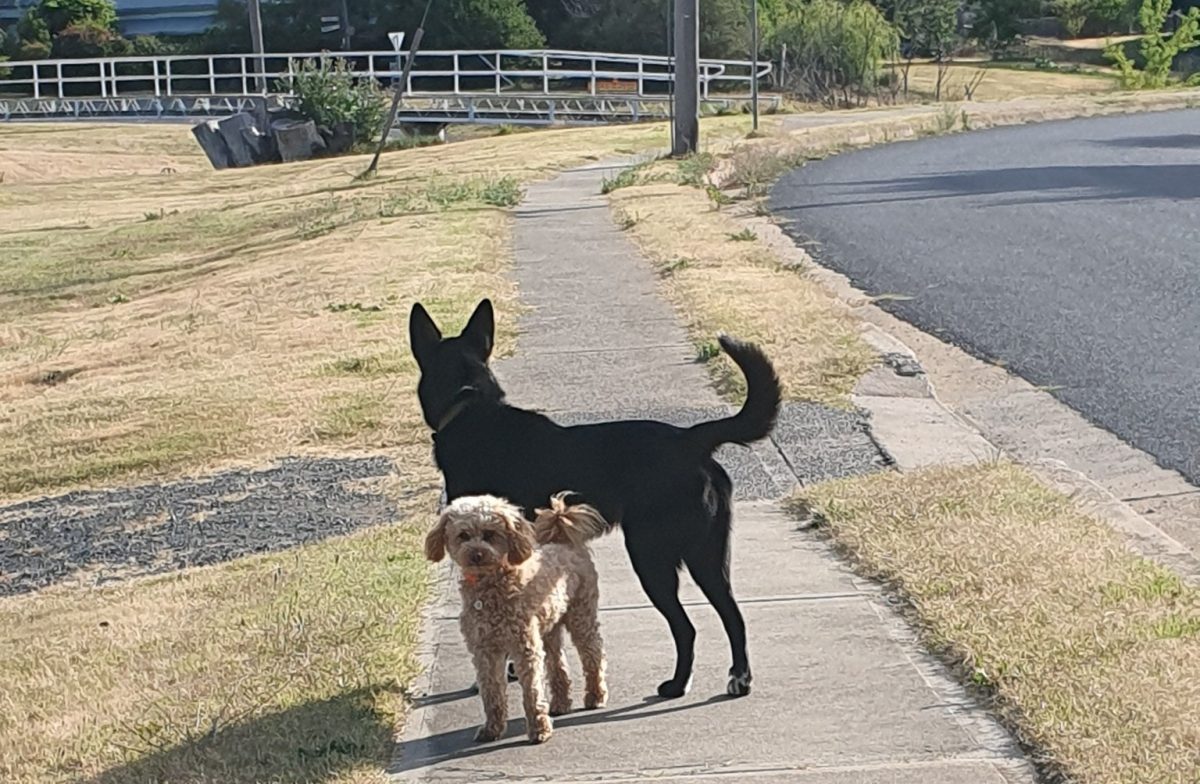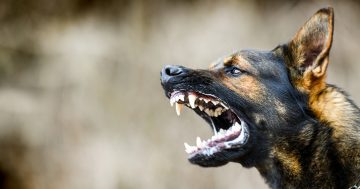
Stray livestock can become panicked and injure themselves, damage private property or even cause traffic accidents on busy roads. Photo: Cj Evans, Facebook.
We’re less than a fortnight into the new year, but stray livestock and wandering dogs are already a hot topic for residents throughout the Snowy Monaro region and into the ACT.
Social media forums used by residents from Michelago to Jindabyne have seen almost daily posts since New Year’s Eve, detailing flocks of loose sheep with lambs at foot and dogs searching yards that aren’t their own for shelter from the midday heat. A panicked horse was even spotted in Cooma on New Year’s Day, running along the busy highway.
Roaming livestock aren’t just a danger to themselves. They can also spread weeds, pests and diseases, cause unwanted pregnancies and damage important infrastructure such as fences and farming equipment.
Seeds from invasive species such as African lovegrass, serrated tussock, St John’s wort and blackberry are easily transported in fleece and fur, and some can survive in an animal’s digestive tract for up to 10 days, giving them plenty of time to spread across large areas.
Livestock on roads can and do cause traffic accidents – if your livestock stray and contribute to a motor vehicle collision, you may be charged with a criminal offence.
NSW Local Land Services says the primary reason behind roaming stock is poor fencing, but breeding seasons and lack of feed are also common culprits.
“The most common reason for straying is that the fence is not sufficient to contain the animals, and the animals have decided that the ‘grass is greener’ on the other side,” the organisation says.
“Often stock are straying from an area where the feed is poor and weedy to one that has better-managed pastures. Unfortunately fences can become damaged and hungry or amorous livestock may take advantage of kangaroo and wombat holes, or damage caused by fallen trees or floodways.
“Make sure that you regularly check your fences for damage, especially after wild weather, and make any repairs as soon as is practicable. If the pastures are bare, put out some supplementary feed, ensuring that it meets the nutritional requirements of stock.”

These dogs were lucky – they were reunited with their owner in Cooma a few hours after being posted on a local Facebook noticeboard. Photo: Rowena Evans.
The recent influx of wandering livestock comes alongside a “concerning” rise in dog attacks across the Snowy Monaro region, as reported by Region in late 2024.
Detective Sergeant Mick Calleja, the Southern Zone Rural Crime Prevention Team coordinator, says these attacks can be attributed to domestic/companion dogs as well as wild dogs.
“We would like to remind dog owners they have a responsibility to ensure their dogs are kept secure and to take all reasonable precautions to prevent dogs from escaping from the property on which they are kept,” he says.
“Fines under the Companion Animals Act of 1988 can apply to owners and persons in charge of dogs if dogs are found to have escaped or attacked a person or animal.”
If your dog attacks a person or another animal, it may also be declared as a nuisance, menacing or dangerous dog by the local council.
If you find stray livestock on your property, NSW Local Land Services’ advice is to isolate them immediately and report them to local authorities if you don’t know who the animals belong to. If they’re on a public road or within national parklands, don’t just put them in the nearest paddock – report them to local council rangers.
Dog attacks in the Snowy Monaro region should be reported immediately to the council’s ranger services team on 1300 345 345.








